
The making of Ian Hugo’s


The making of Ian Hugo’s
The artist’s intaglio printing process from State 1 to 17
The Annex Galleries
A collection of state proofs illustrating Ian Hugo’s printing process for “The Jungle Book” (1941). Like many of the artists who worked at famed workshop Atelier 17 in Paris and New York (the latter of which he helped to establish when it was temporarily relocated to the U.S. during World War II), Hugo used both engraving for sharp line and soft ground etching texturized with pressed fabric to create his intaglio prints.
Ian Hugo was born Hugh Parker Guiler in Boston, MA, and his childhood was spent in Puerto Rico. The tropical landscape of the island remained a source of inspiration throughout his life and is reflected in the Surreal imagery of his prints, drawings, and films. He then attended high school in Scotland and earned his degree in economics and literature from Columbia University in New York .
In 1923, he met Cuban-French writer Anaïs Nin in Havana. They would later marry, and Hugo – who changed his name for his artistic pursuits while working as a banker under his real name – would go on to illustrate several of her published works. A successful banker, he never pursued a career in art but it remined one of his primary focuses throughout his life. He continued to work in intaglio printmaking until his death in 1985.
More wor ks by Ian Hugo can be found at the Annex Galleries. Contact us with questions at:
Tel. +1 (707) 546-7352 artannex@aol.com www.annexgalleries.com

The first state begins with an elephant and the head of a surreal human-like form. Hugo has only partially wiped the plate to provide tonality. He has also trimmed the composition to the platemar k.
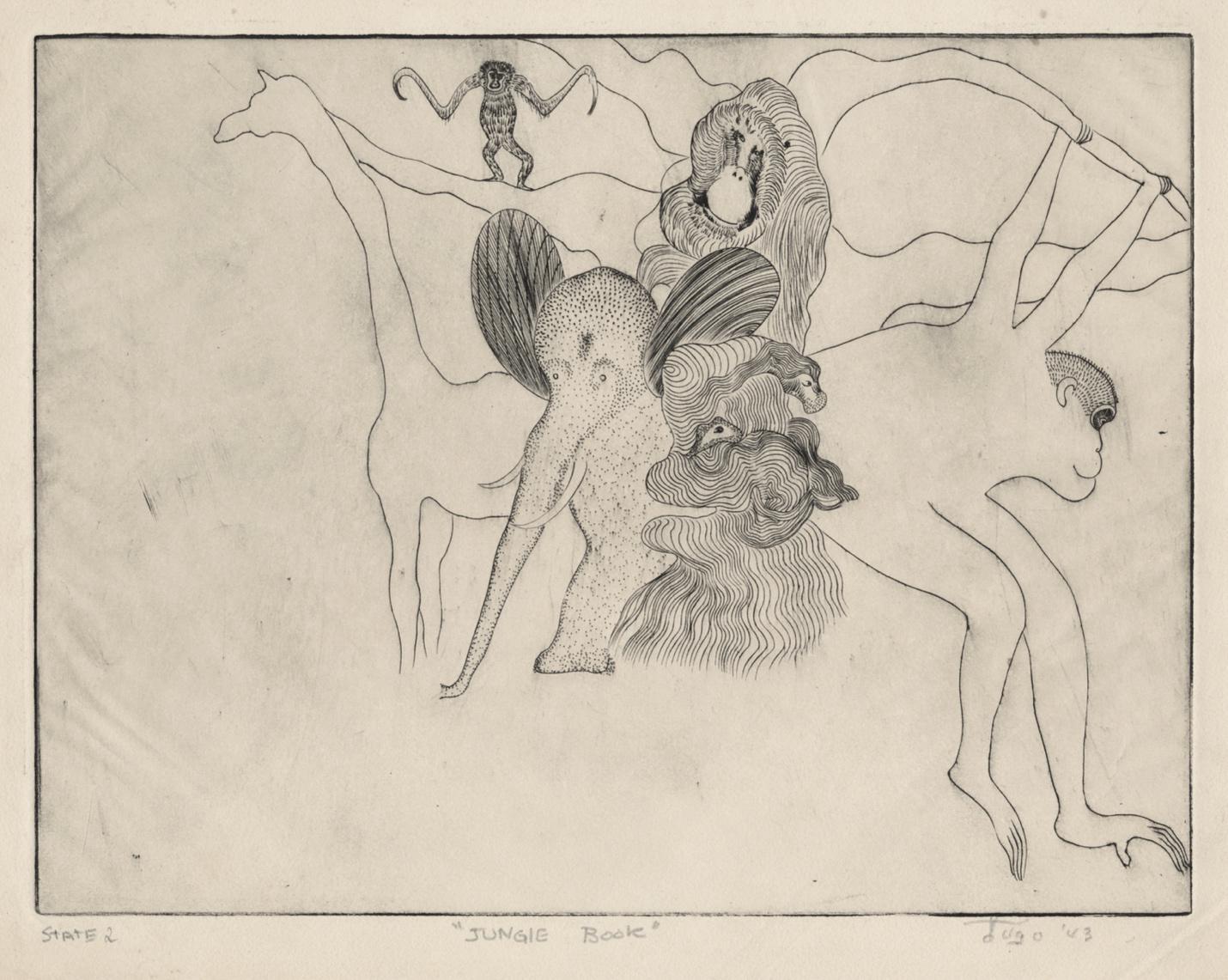
Addition of a tree, monkeys, an ape, and a giraffe. Hugo has more thoroughly wiped the plate to provide contrast between the lines and the paper. He has kept the margins.
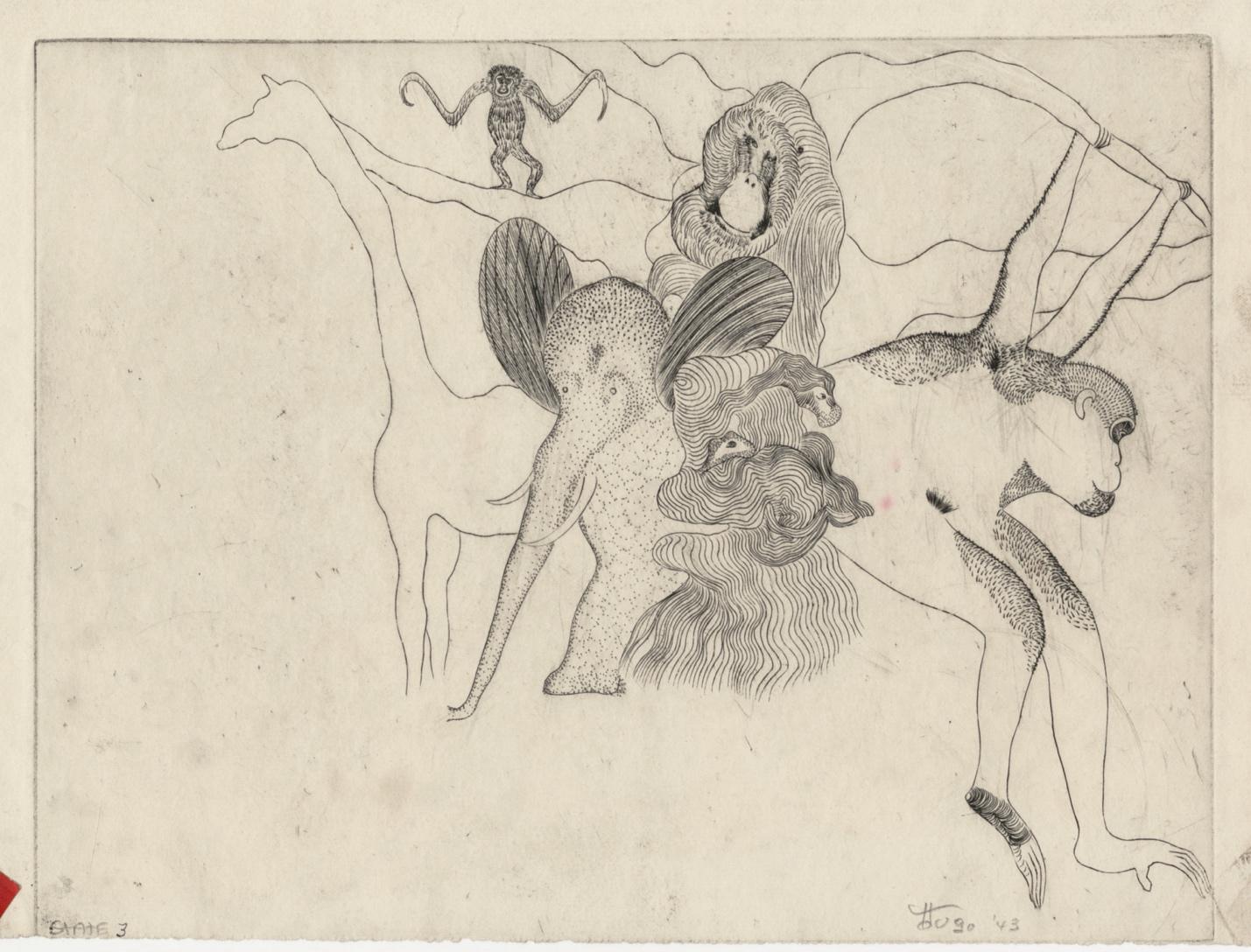
State 3
Texture is added to the legs, head, and arms of the monkey on the right.
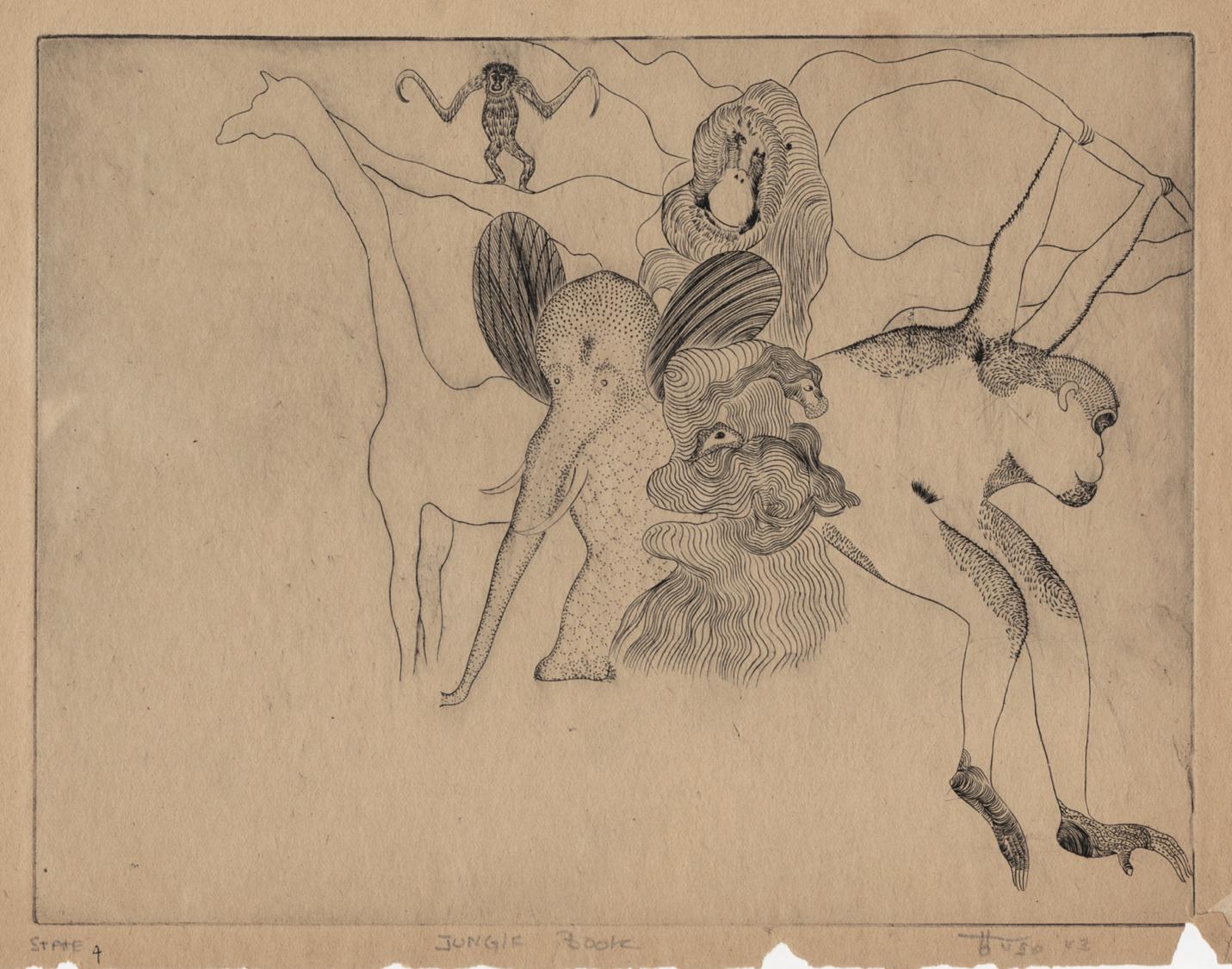
State 4
Further texture added to t he monkey’s feet.
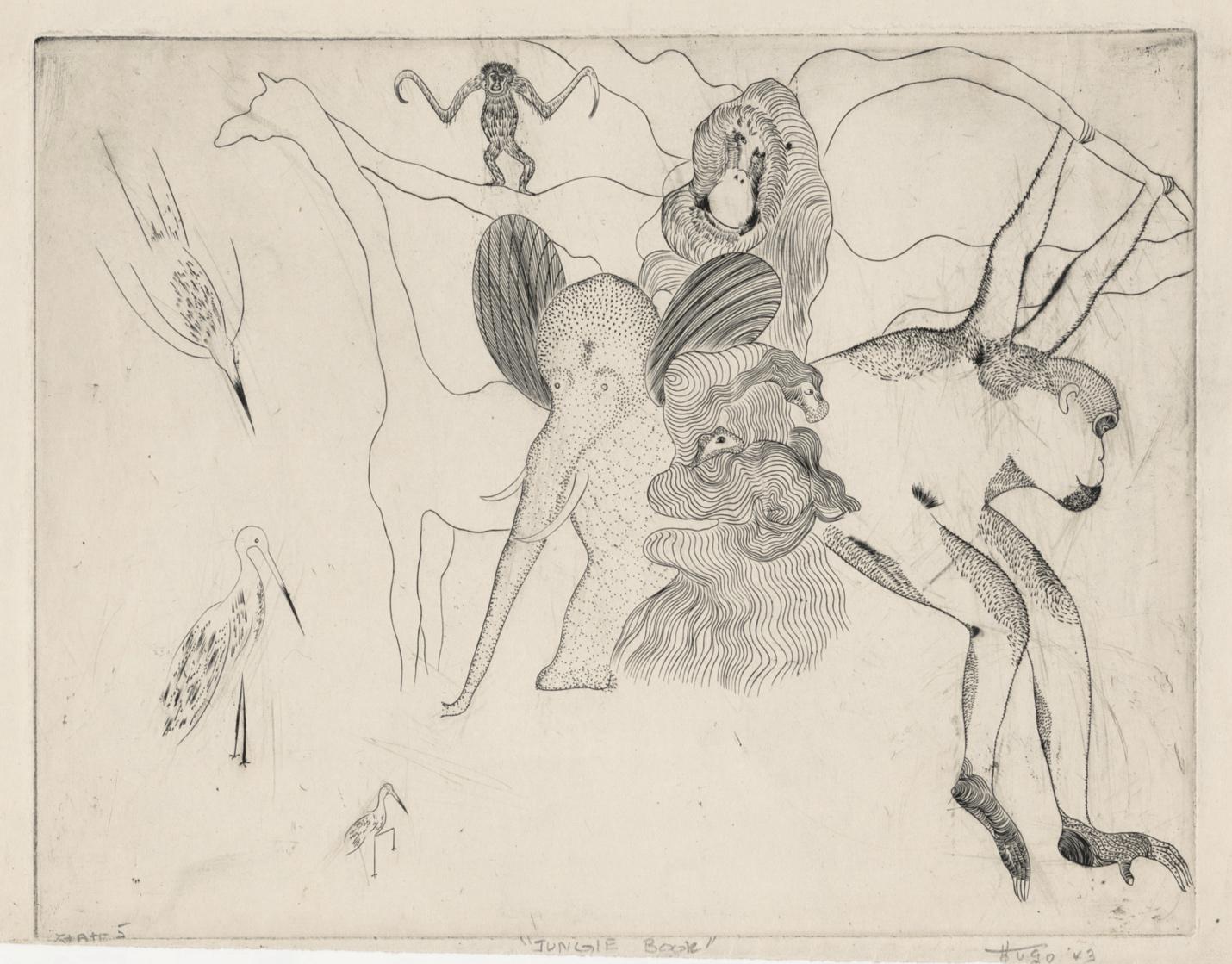
St ate 5
Three waterfowl are added to the left side of the plate.

St ate 5A Hugo adds the pattern to the giraffe hide.
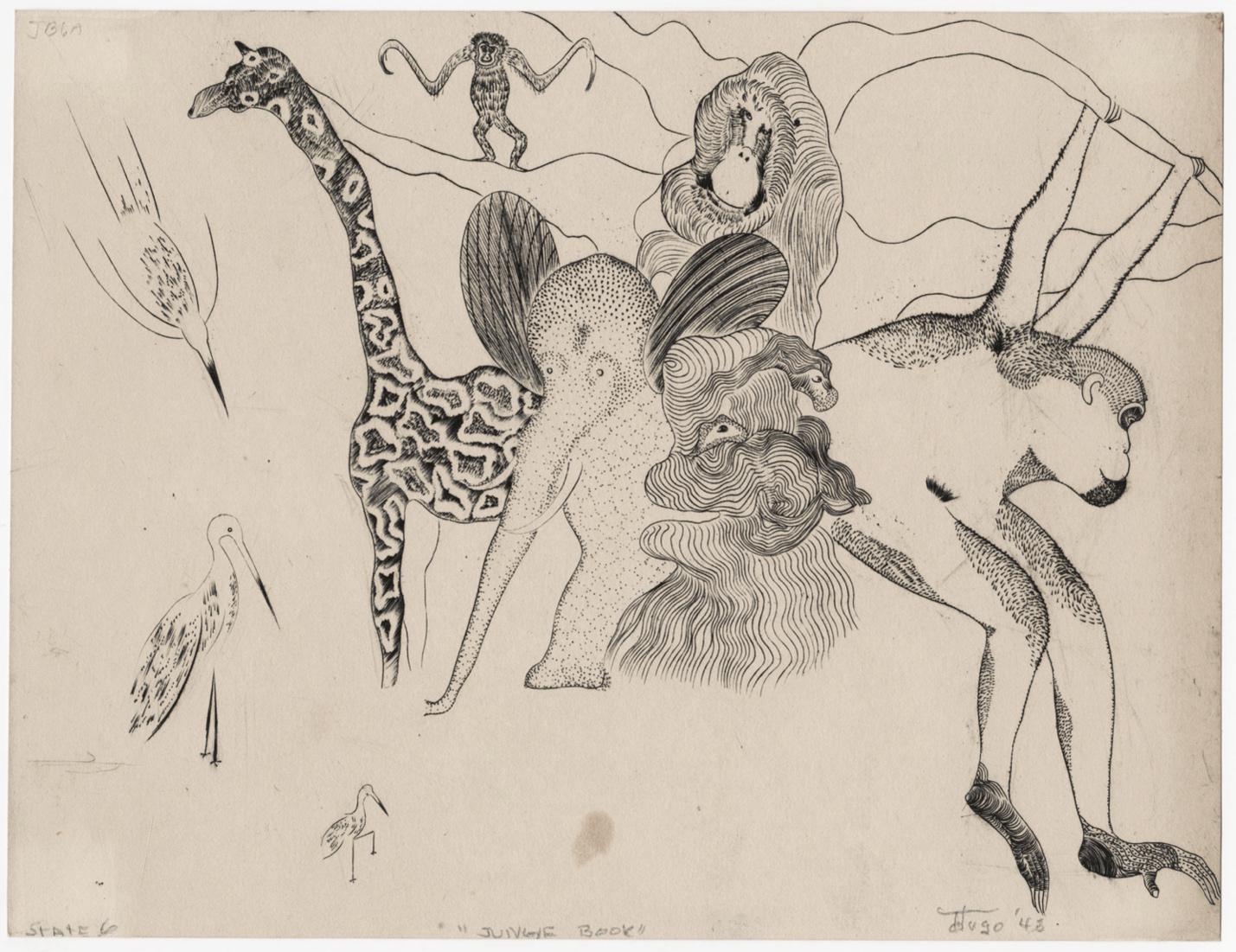
State 6
No discernable difference from state 5, except for the type of paper. This happens throughout Hugo’s printing process and state numbering system (already fairly loose), as he experimented with the outcomes of the inks on different papers.
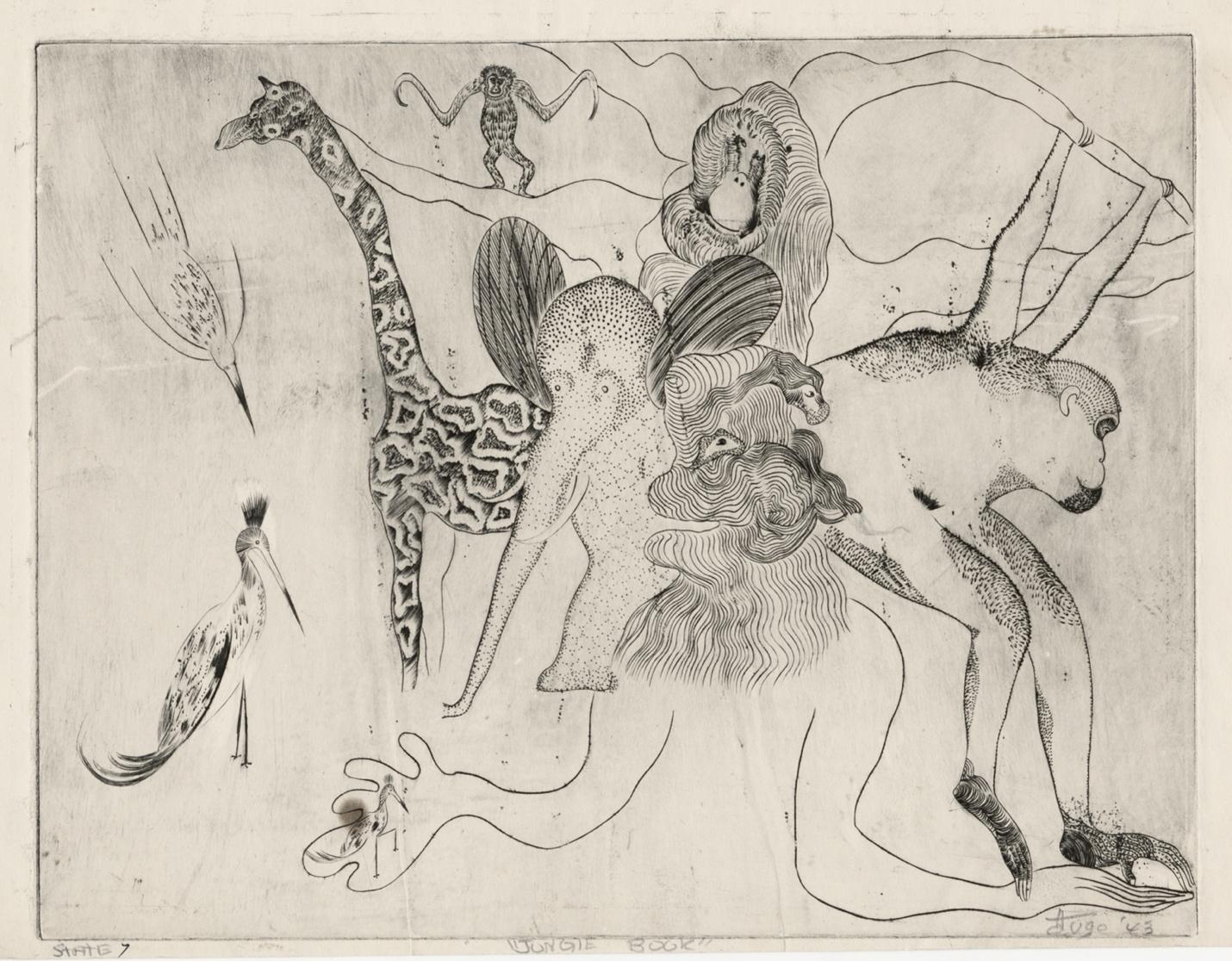
State 7
Hugo has added arms to the human figure in the forefront, the left arm now holding the smallest bird and the right cupping the feet of the monkey.
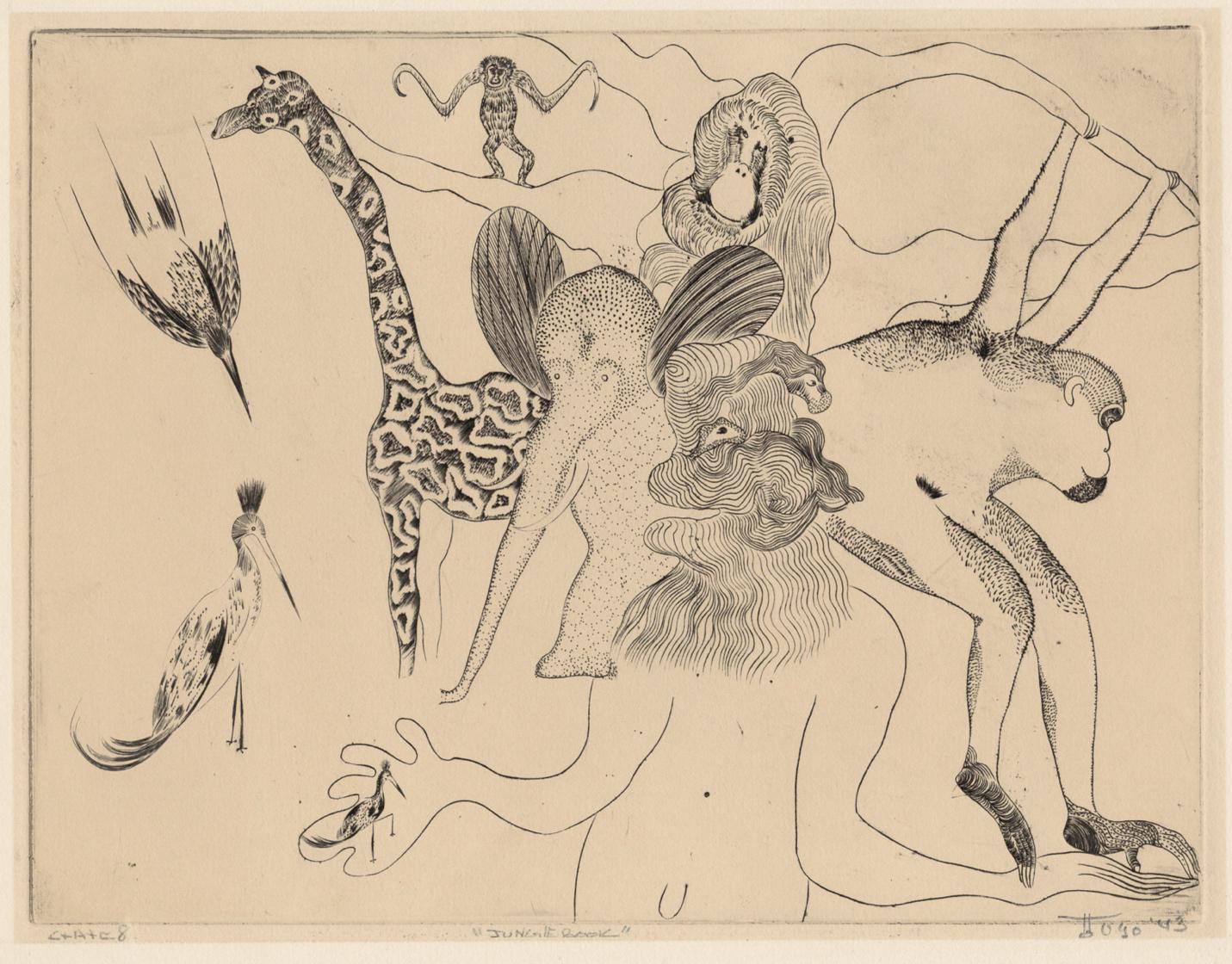
State 8
The human figure now has a torso and the waterfowl are more defined.
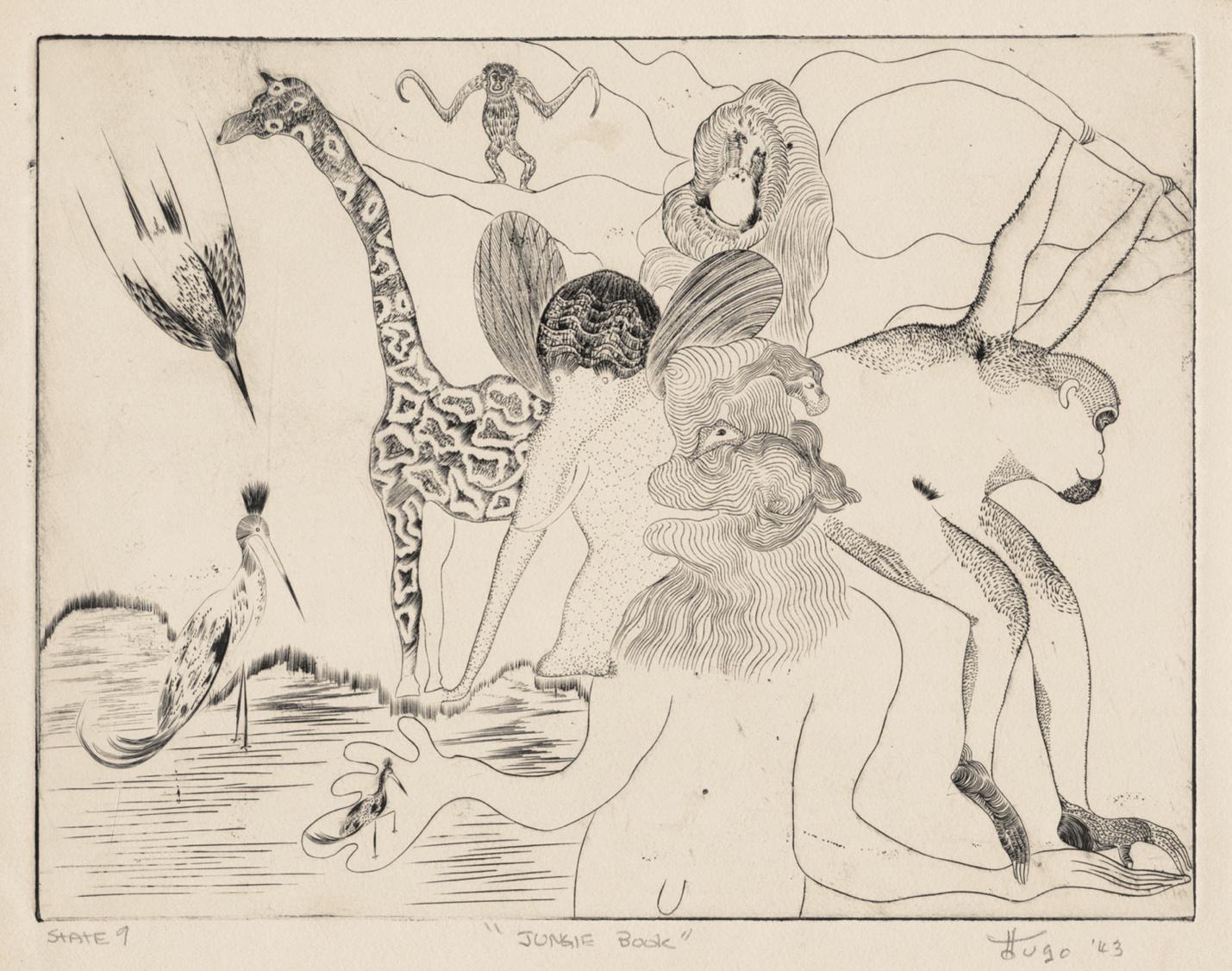
Hugo begins to flesh out the landscape, with the addi5on of lines in the lower le8 corner sugges5ng a body of water lined in grass. The elephant is given more texture to its head.
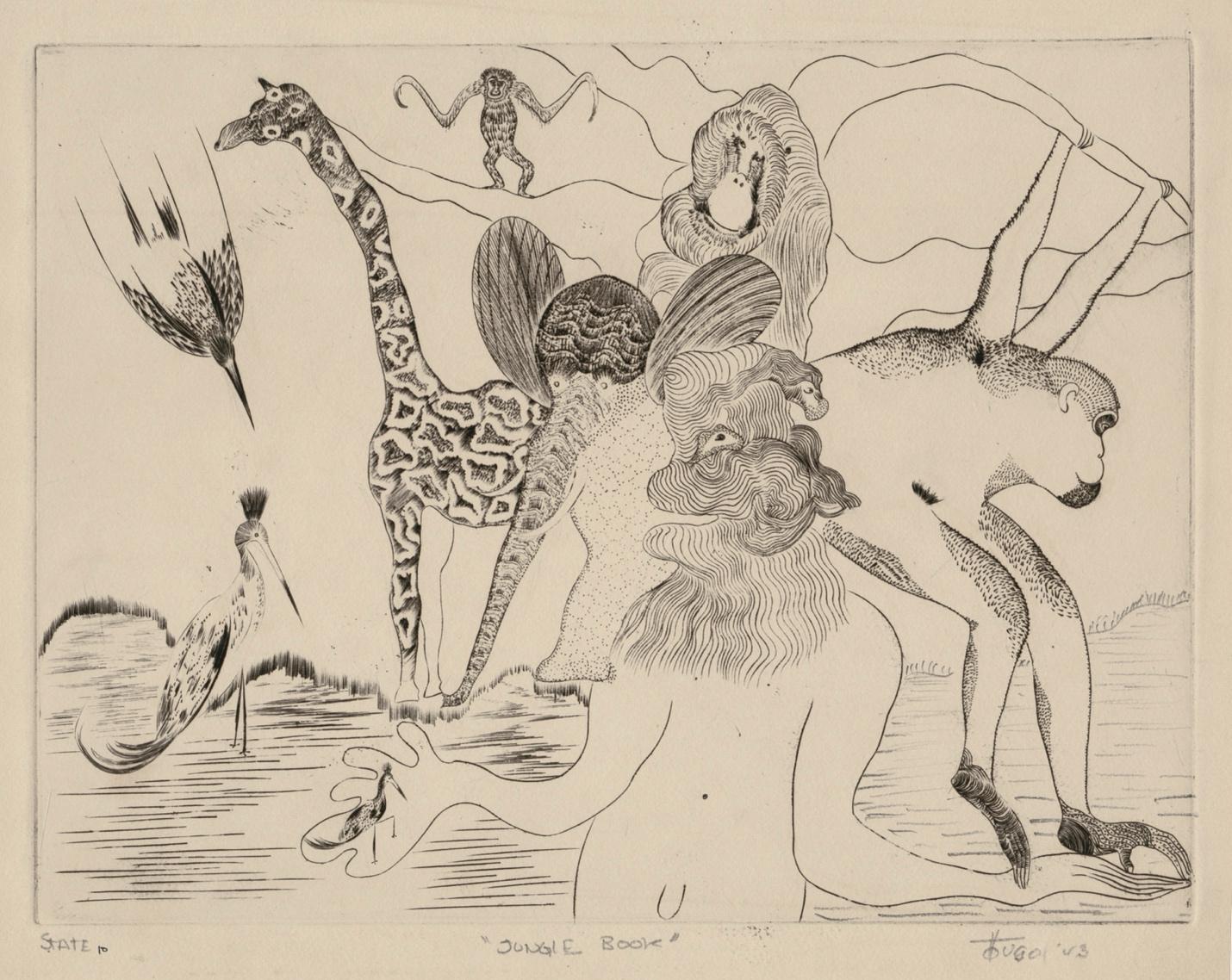
State 10
A working proof with penciled addi5on of landscape in the lower right corner of the plate. The elephant’s trunk and ears and the right monkey are given more texture.
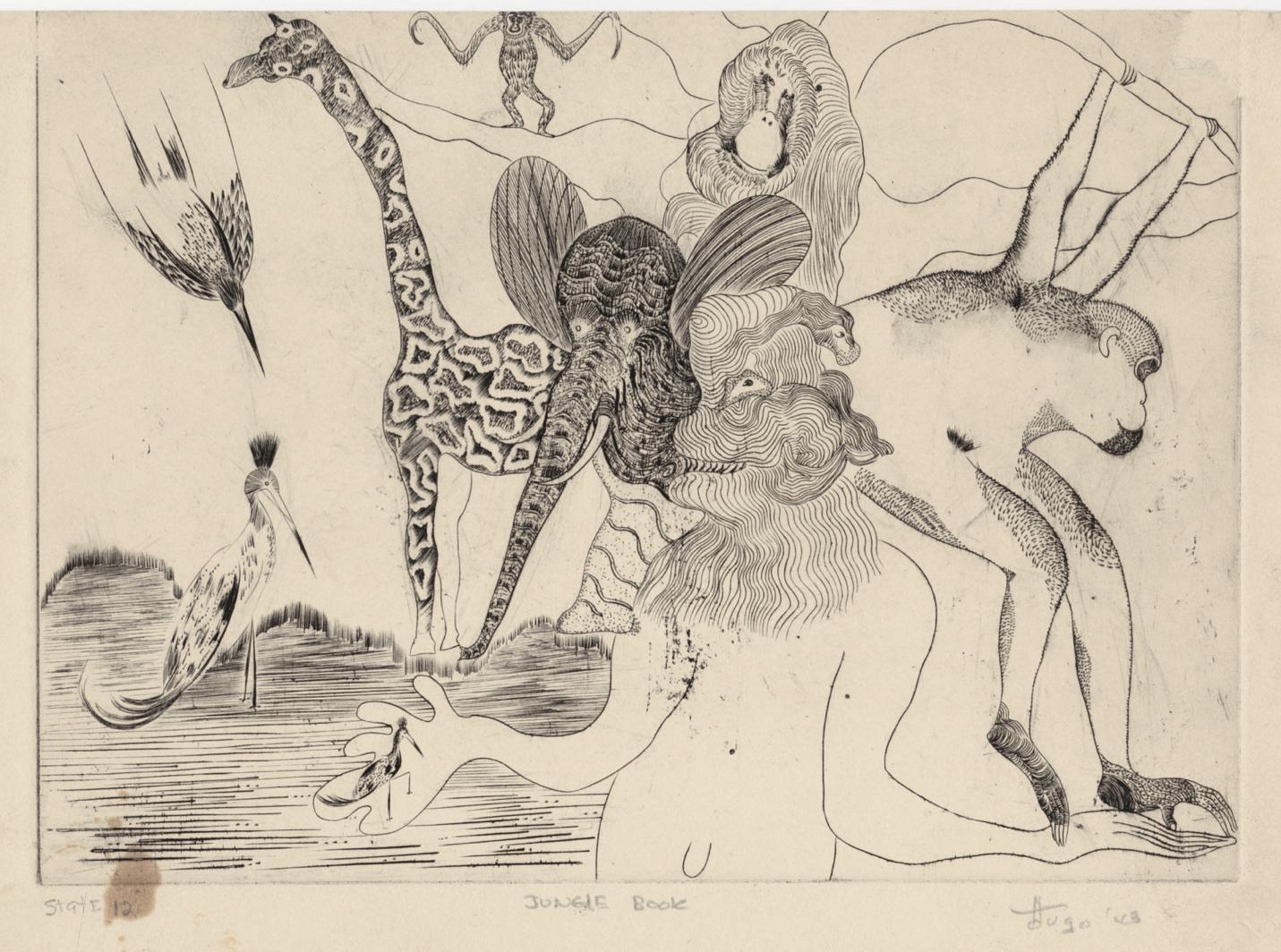
(Note: it ’ s unclear if Hugo did not include state 11, or if he simply forgot to number the 11th state as such)
The elephant ’s entire head and trunk are darkened with more linework and its legs are given a wavy line pattern; the left-side landscape is given more texture.
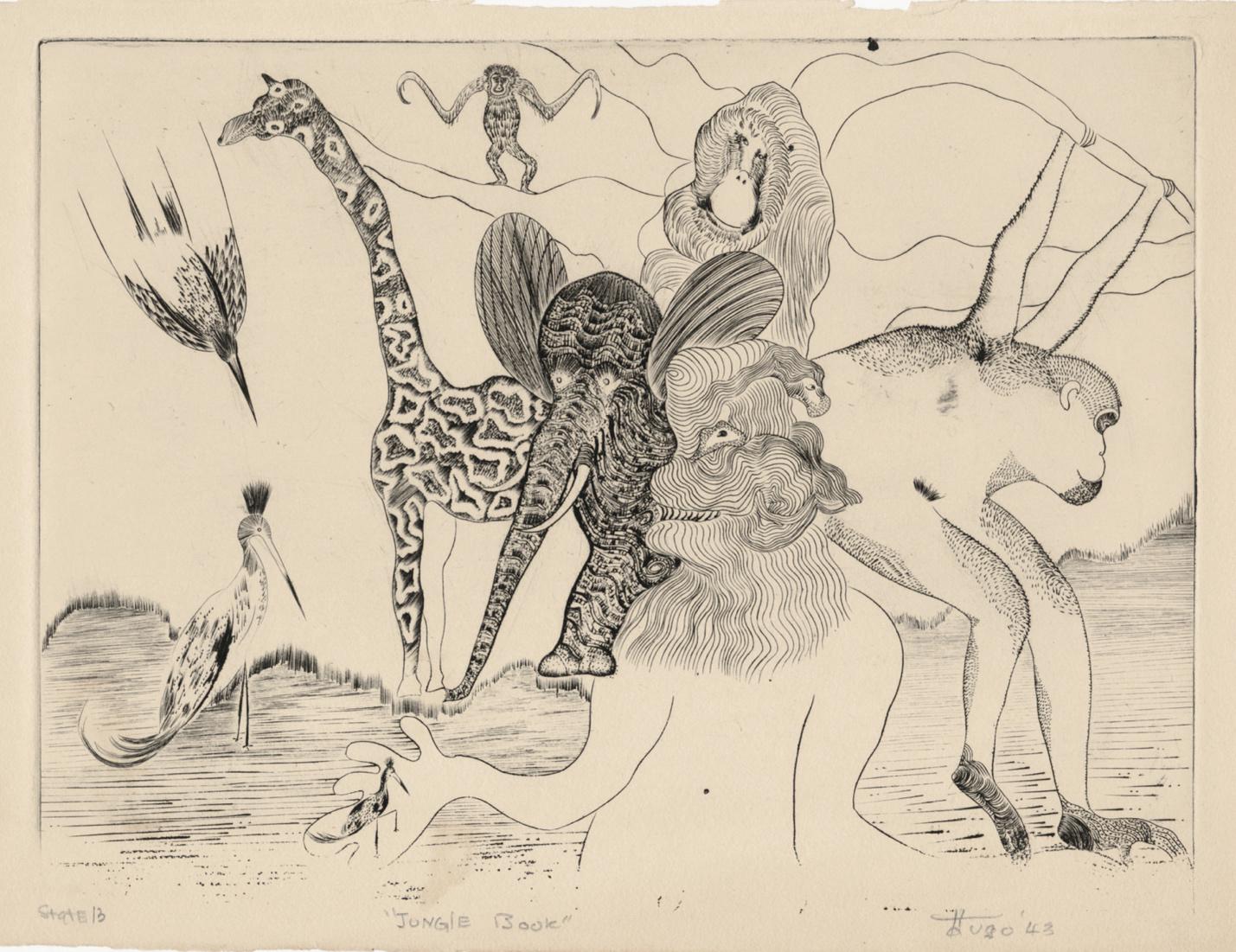
Hugo extends the landscape to reach across the en5re length of the plate and he’s filled in the elephant ’s en5re body with more linework. It appears that the boDom edge of the plate did not en5rely print.
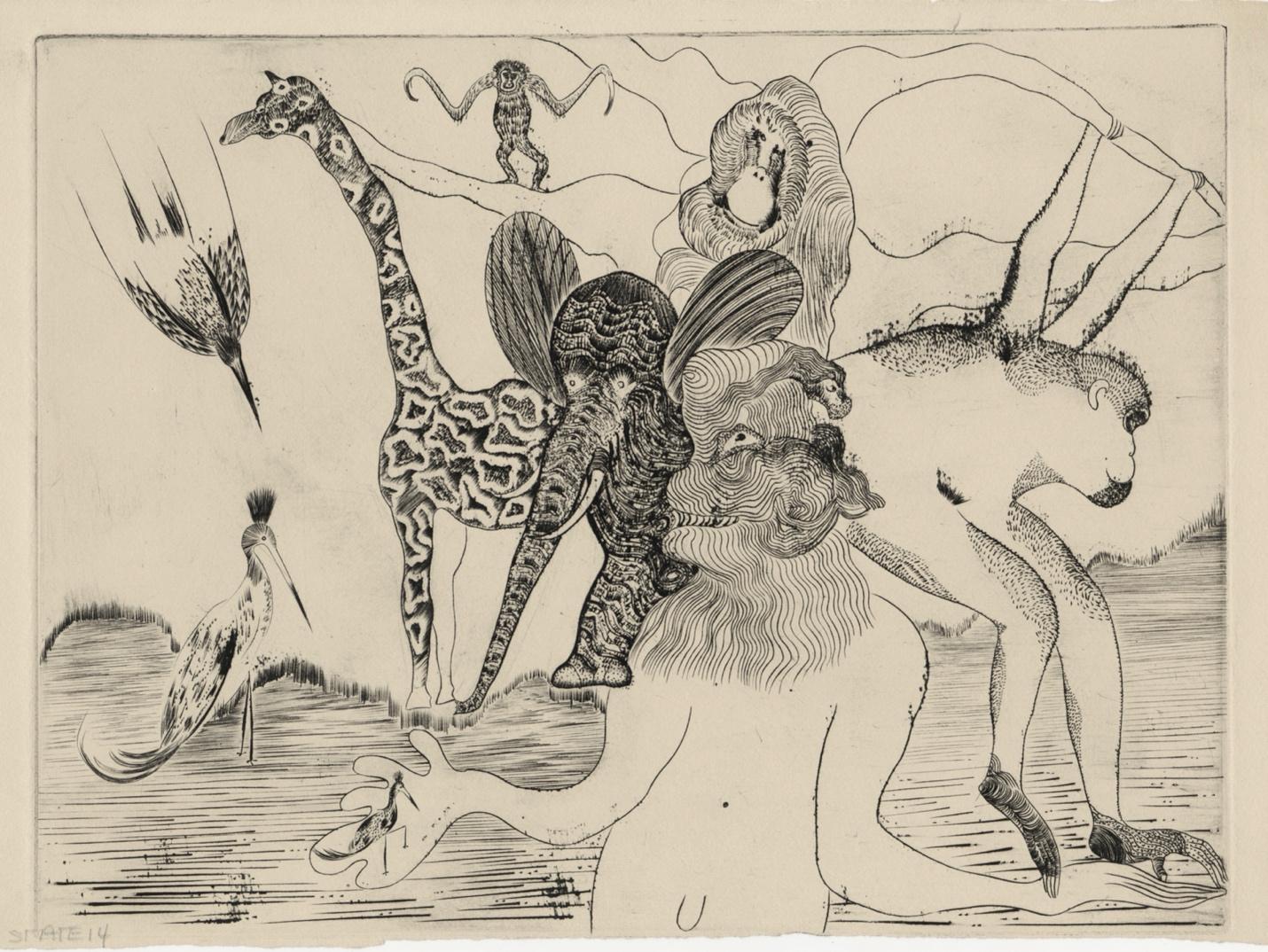
Hugo darkens textures throughout the composi5on to provide depth and shadow.
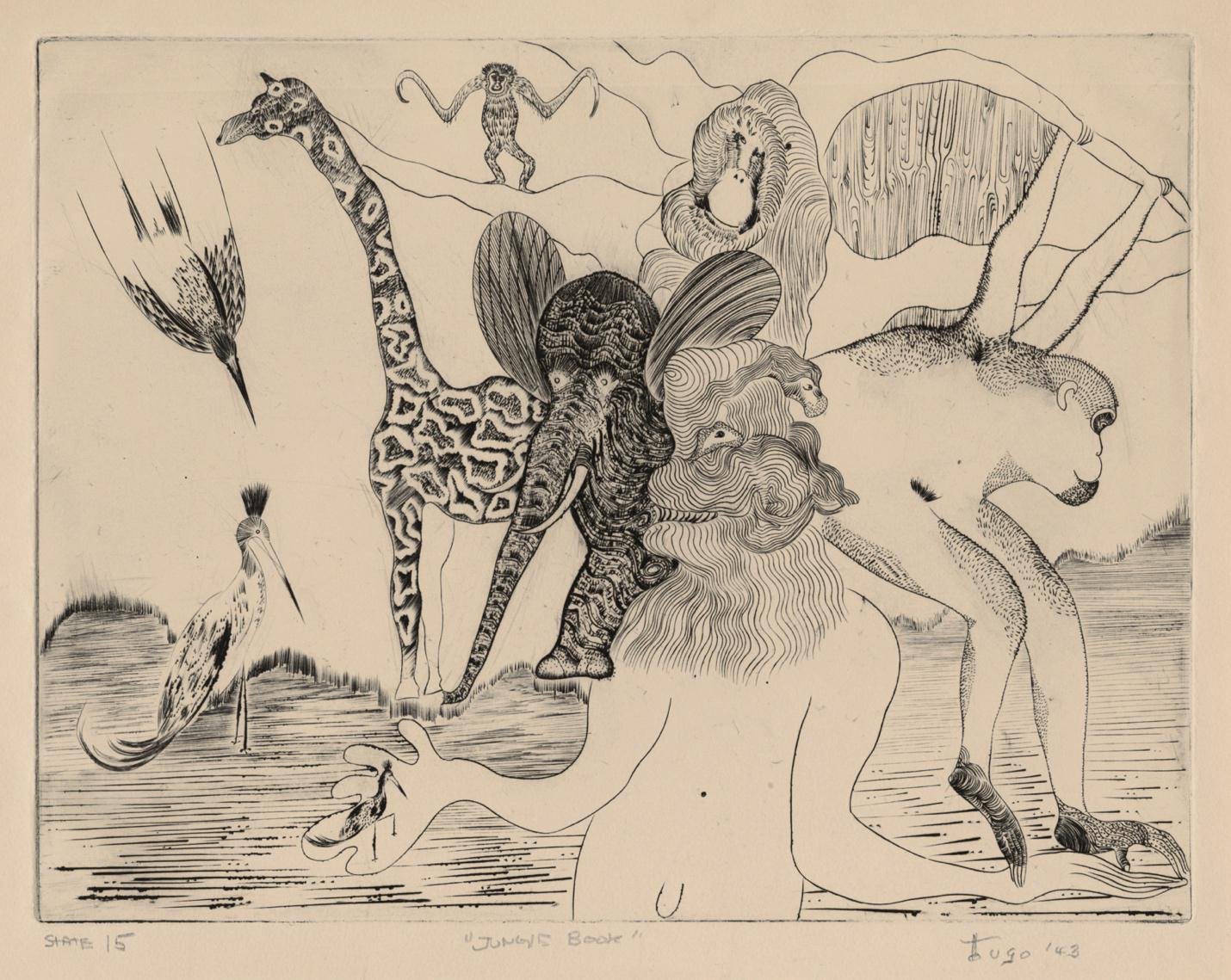
Wood grain-like paDerning appears in the sky between the branches of the tree and the monkey ’s arm in the upper right. The shapes of the birds are gouged more deeply into the plate.

Further grain is added to the upper right between the tree branches and behind the monkey.

State 16A
More texture is added to the water and to the sky behind the right monkey and behind the small le8 monkey.
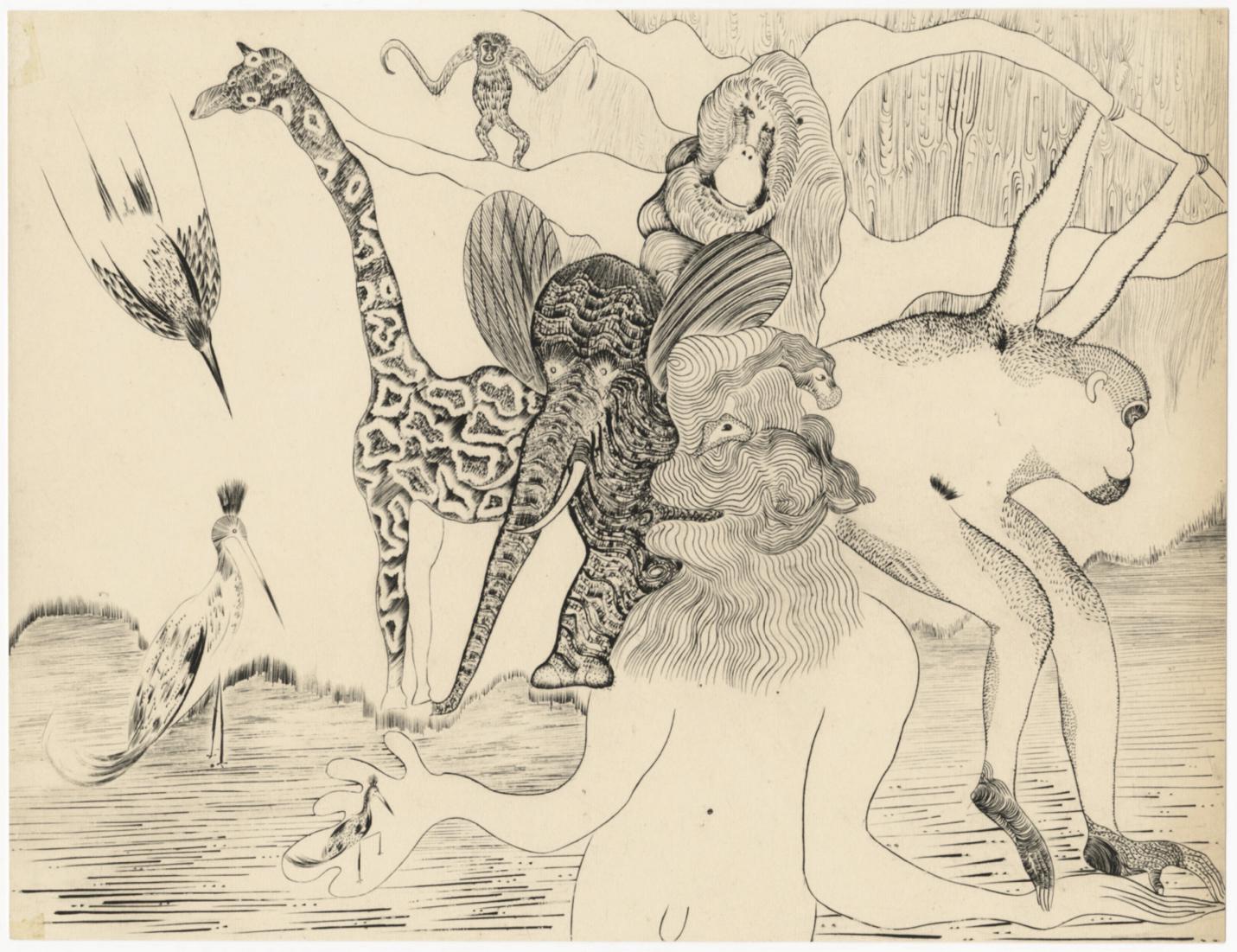
More texture is added to the sky behind the right and le8 monkeys. The lines of water in the boDom of the plate are gouged more deeply.
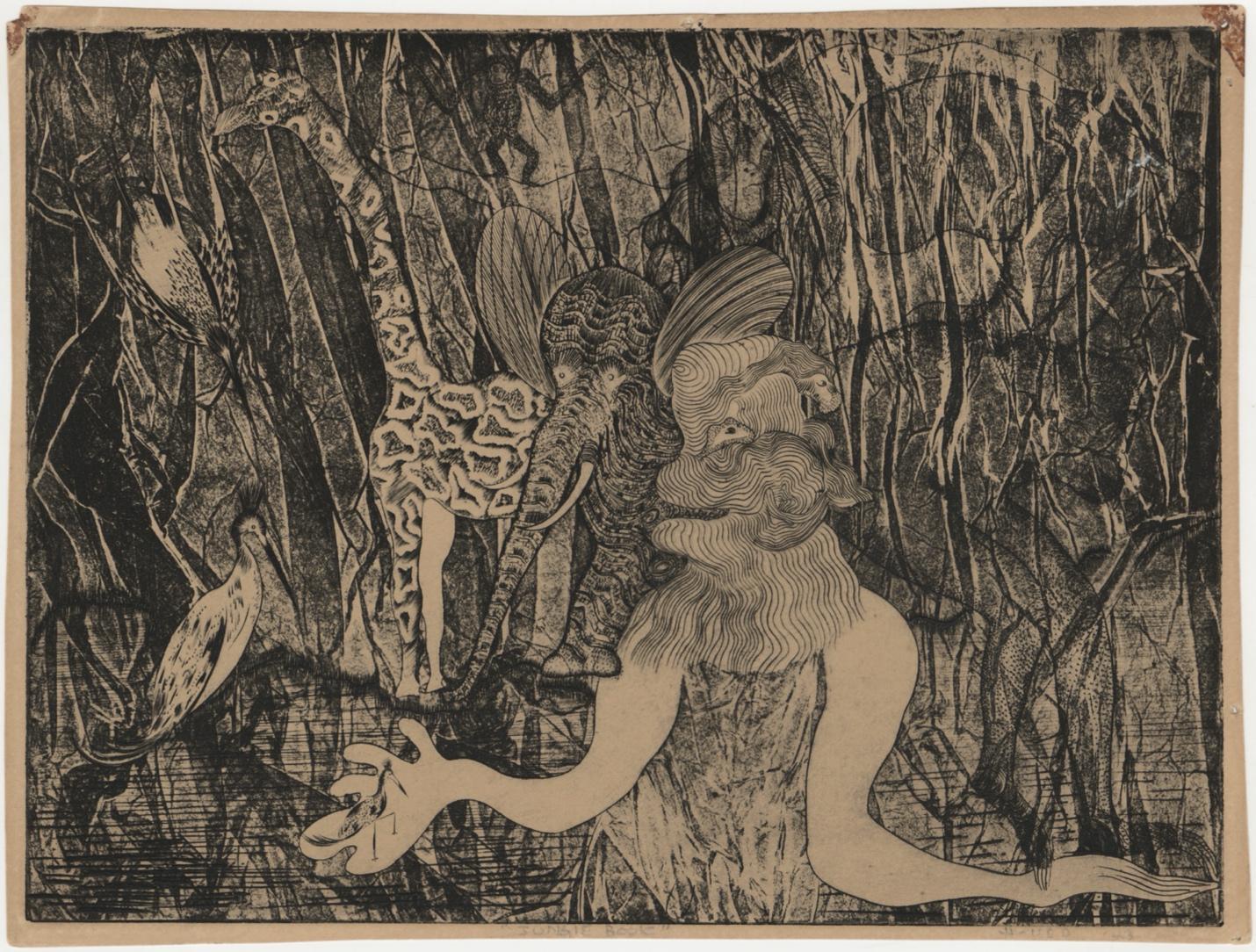
Between states 16B and 17A there is a remarkable amount of altera5on to the plate, and it ’s assumed that some of the state proofs did not make it into the collec5on. Here, the en5re plate is given texture using so8ground, effec5vely shrouding the human-like figure’s torso, the monkeys, and the ape behind a veil of fractured darkness that resembles creased paper, and may in fact have been created using fabric pressed into the plate. Hugo has also emphasized the grass and water with deep gouges.
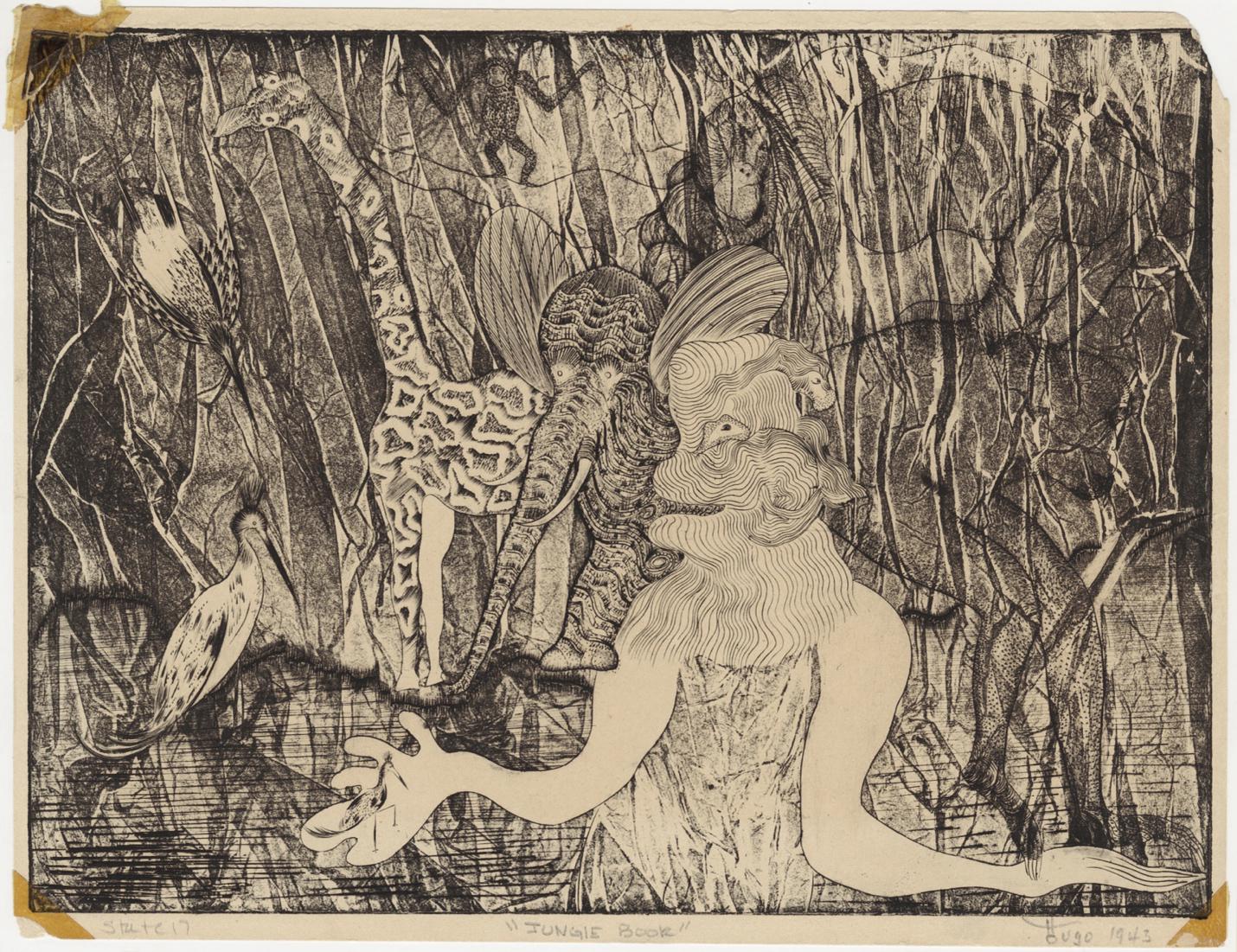
Nearly the the same as 17A but now the ink around the right monkey and the ape is wiped a bit more and their lines are slightly bolder, allowing them to emerge from the shadows somewhat. Huge also uses a different paper from state 17A.

The final itera5on of this state before the edi5oning. Hugo has trimmed the paper past the platemark.

Copyright 2024 The Annex Galleries 604 College Ave., Santa Rosa, CA 95404 www.annexgalleries.com (707) 546-7352 artannex@aol.com